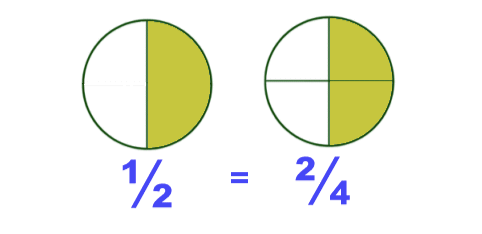How can we reduce fractions?
A fraction is considered fully reduced when there are no common factors between the numerator and the denominator. In the diagram below, 2/4 is not a simplified fraction because both 2 and 4 can be divided by 2. When we divide the numerator and denominator by 2, you get the equivalent fraction of ½ . You can see in the diagram, that while the values do not have the same numbers, the amounts shaded in are equivalent.

To reduce fractions, you must find the greatest common factor between the two numbers. You can do this one of two ways:
Way #1 - list of factors
- List all factors of the numerator and the denominator.
- Determine the largest factor that is common between both numbers.
- Divide the numerator and the denominator by that number and write the reduced fraction.
Way #2 - simultaneous factoring
- Find a common factor between the numbers and divide both the numerator and denominator.
- Continue to divide the new set of numbers until one of the original numbers becomes 1 or the two numbers are co-primes.
- Multiply all the factors that were divided out together to determine the greatest common factor.
- Divide the numerator and denominator by that number and write the reduced fraction.





